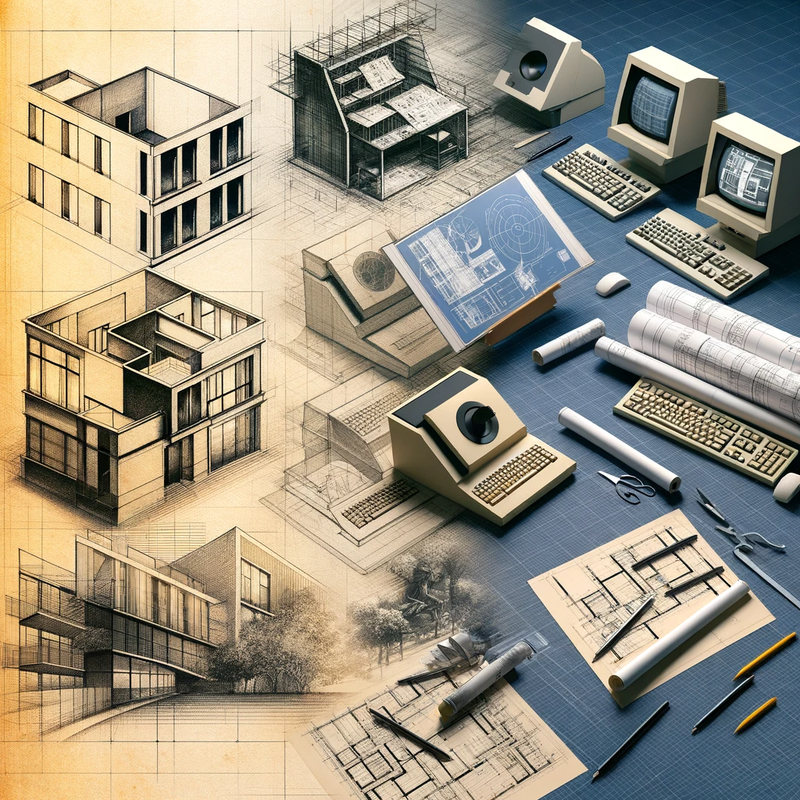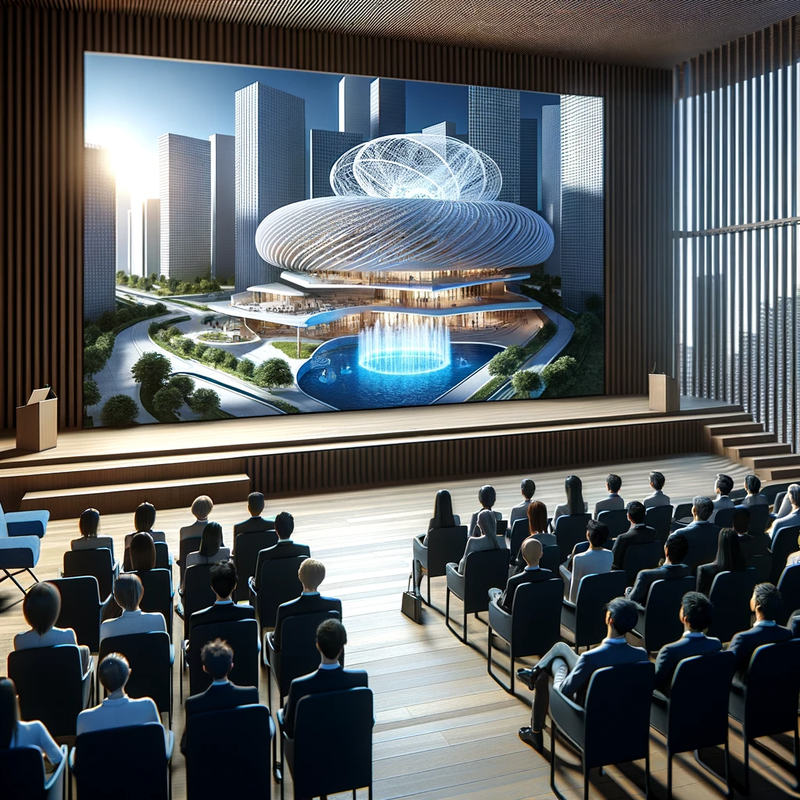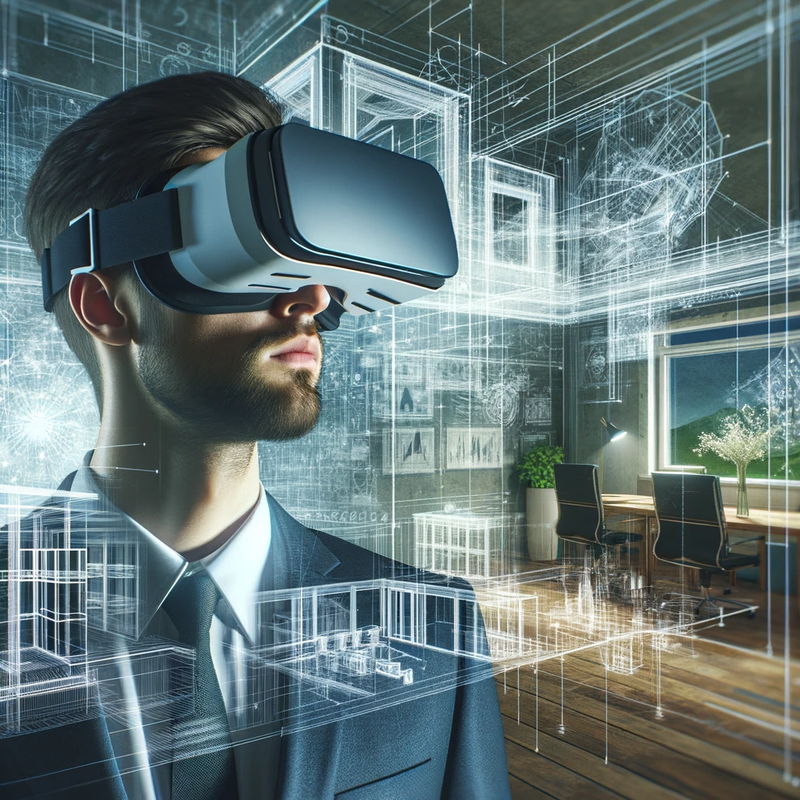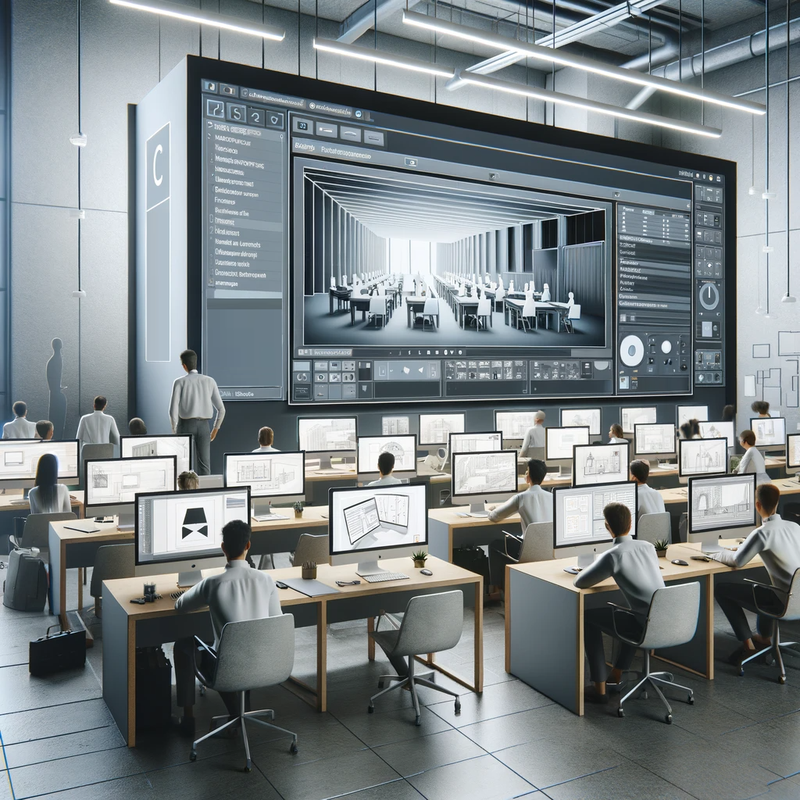The Future of Architectural Visualization: Embracing Architectural Animation
Architectural visualization is a cornerstone of architectural design, offering a critical medium through which architects express their vision, communicate ideas to clients and stakeholders, and troubleshoot potential design issues. For years, it has gone through a significant evolution, and the current spotlight is on architectural animation–a powerful tool that promises to shape the future of architectural visualization. This article takes an in-depth look at this emerging technology and its transformative impact on the architectural industry.
Architectural Visualization: A Quick Look at Its Evolution

From the dawn of civilization, architectural visualization has helped to shape our built environment. In the early years, it primarily took the form of hand-drawn sketches and renderings. Computer-aided design (CAD) started a new era, offering precise 2D drawings and, later, more complex 3D models. The latest progression in this field is architectural animation.
Architectural animation could be perceived as the logical next step in the evolution of architectural visualization. It's a step up from static 3D models, adding a dimension of time and space that allows the viewer to experience a design from every perspective–almost as if they were physically present in the space. Architectural animation is the closest we can get to experiencing a design before we bring it to life.
Understanding Architectural Animation
Architectural animation is a short architectural movie created on a computer. It’s a series of hundreds or even thousands of still images. When these images are assembled and played back, they produce a movie effect much like a real movie camera would. The difference is that the images are not real but created on a computer.
The technology behind architectural animation is complex, involving advanced computer software and hardware. Sophisticated 3D modelling software is used to create a detailed digital model of the design. This model is then textured, lit, and populated with elements such as people, vehicles, and vegetation to add realism. The last step is to animate the camera's movement through the space, creating the illusion of a dynamic, three-dimensional tour of the design.
The Impact of Architectural Animation on Design Presentation

Architectural animation brings many advantages to the design presentation stage. Unlike static renderings, animations offer a dynamic, comprehensive view of a project. They enable a continuous tour that can highlight different aspects of a design, including the interplay of light and shadow, the flow of spaces, and the project's relationship to its surroundings.
For clients and stakeholders, architectural animations can convey complex spatial relationships that might be hard to grasp in 2D or static 3D visualizations. They allow viewers to understand a building's scale and the function of its spaces more intuitively. These attributes make architectural animations a compelling tool for winning bids, gaining planning permission, and engaging the public in the design process.
Case Studies: Successful Implementation of Architectural Animation
Several architectural projects worldwide have already reaped the benefits of architectural animation. For instance, the planning process for the proposed redevelopment of a historic city centre benefitted from an architectural animation that showed the development's impact on the existing urban fabric. The animation helped both city officials and the public understand the project's scope and how it would enhance the city's character.
In another instance, an architectural firm used animation to communicate a complex design for a new museum to its client. The animated walkthrough allowed the client to appreciate the project's intricate spatial configuration, which would have been challenging to comprehend through static renderings alone. As a result, the firm secured the client's approval to move forward with the design.
The Role of Architectural Animation in Virtual Reality (VR)

Architectural animation has also found a place in the exciting world of Virtual Reality (VR). With the aid of VR headsets, we can transform architectural animations into immersive VR experiences. This allows clients and stakeholders to virtually 'step inside' the design and explore it at their own pace. The potential applications of this technology are vast, from helping clients visualize a residential property to enabling community engagement in large urban design projects.
Besides enhancing the visualization process, VR architectural animations can aid in design development. Architects can use them as a tool for understanding how unique design elements work together in a space. This immersive approach can help identify potential issues and make informed decisions earlier in the design process, saving time and resources.
The Future of Architectural Animation
As technology continues to advance, architectural animation will become more sophisticated, accessible, and integral to the architectural profession. Future advancements are likely to include even more realistic visuals, thanks to improvements in rendering software and hardware.
As VR technology becomes more mainstream, the fusion of architectural animation and VR is expected to become more prevalent. This could transform the way architects present their designs, and how clients and the public engage with architecture.
Augmented Reality (AR), which overlays digital information onto the physical world, also presents exciting possibilities for architectural animation. For example, AR could allow clients to view an animated 3D model of a building design on a real-world site, providing a powerful tool for visualization and decision-making.
Embracing Architectural Animation: Tips and Considerations for Architects

Architectural animation represents a significant step forward in architectural visualization. However, like any technology, it requires a learning curve and a willingness to adapt existing practices. Training in using 3D modelling and animation software is essential for architects intending to incorporate this technology into their work.
While learning and mastering architectural animation can take time, there are ways to ease this transition. Many software tools offer online tutorials and user communities that can provide support and resources. In addition, architects may choose to collaborate with specialized companies that offer architectural animation services, allowing them to benefit from this technology while they build their skills.
Despite the challenges, embracing architectural animation can offer immense rewards. It's a powerful communication tool that can enhance design presentations, improve client engagement, and streamline the design process. For architects, mastering this technology is not just an investment in their skill-set, but also an investment in the profession's future.
Conclusion
The future of architectural visualization lies in architectural animation. This innovative technology offers an unprecedented level of realism and interactivity, changing the way architects communicate their designs and how clients and stakeholders perceive and engage with architectural projects. While adopting this technology involves a learning curve, the potential benefits make it a worthwhile endeavour.
As we move forward, architects must embrace this promising technology to stay relevant and competitive. As this article has shown, architectural animation is not just a novel tool; it is a game-changer that promises to shape the future of architectural visualization. It’s an exciting time for architects to explore, innovate, and redefine the boundaries of architectural visualization.
In another instance, an architectural firm used animation to communicate a complex design for a new museum to its client. The animated walkthrough allowed the client to appreciate the project's intricate spatial configuration, which would have been challenging to comprehend through static renderings alone. As a result, the firm secured the client's approval to move forward with the design.
The Role of Architectural Animation in Virtual Reality (VR)
Architectural animation has also found a place in theexciting world of Virtual Reality (VR). With the aid of VR headsets, architectural animations can be transformed into immersive VR experiences. This allows clients and stakeholders to virtually 'step inside' the design and explore it at their own pace. The potential applications of this technology are vast, from helping clients visualize a residential property to enabling community engagement in large urban design projects.
In addition to enhancing the visualization process, VR architectural animations can aid in design development. Architects can use them as a tool for understanding how different design elements work together in a space. This immersive approach can help identify potential issues and make informed decisions earlier in the design process, saving time and resources.
The Future of Architectural Animation
As technology continues to advance, architectural animation is set to become more sophisticated, accessible, and integral to the architectural profession. Future advancements are likely to include even more realistic visuals, thanks to improvements in rendering software and hardware.
Additionally, as VR technology becomes more mainstream, the fusion of architectural animation and VR is expected to become more prevalent. This could transform the way architects present their designs, and how clients and the public engage with architecture.
Augmented Reality (AR), which overlays digital information onto the physical world, also presents exciting possibilities for architectural animation. For example, AR could allow clients to view an animated 3D model of a building design on a real-world site, providing a powerful tool for visualization and decision-making.
Embracing Architectural Animation: Tips and Considerations for Architects
Architectural animation represents a significant step forward in architectural visualization. However, like any technology, it requires a learning curve and a willingness to adapt existing practices. Training in the use of 3D modeling and animation software is essential for architects intending to incorporate this technology into their work.
While learning and mastering architectural animation can take time, there are ways to ease this transition. Many software tools offer online tutorials and user communities that can provide support and resources. In addition, architects may choose to collaborate with specialized companies that offer architectural animation services, allowing them to benefit from this technology while they build their skills.
Despite the challenges, embracing architectural animation can offer immense rewards. It's a powerful communication tool that can enhance design presentations, improve client engagement, and streamline the design process. For architects, mastering this technology is not just an investment in their skillset, but also an investment in the future of the profession.
Conclusion
The future of architectural visualization lies in architectural animation. This innovative technology offers an unprecedented level of realism and interactivity, changing the way architects communicate their designs and how clients and stakeholders perceive and engage with architectural projects. While adopting this technology involves a learning curve, the potential benefits make it a worthwhile endeavor.
As we move forward, architects must embrace this promising technology to stay relevant and competitive. As this article has shown, architectural animation is not just a novel tool; it is a game-changer that promises to shape the future of architectural visualization. It’s an exciting time for architects to explore, innovate, and redefine the boundaries of architectural visualization.
Our Services
View some of our most popular services below.











